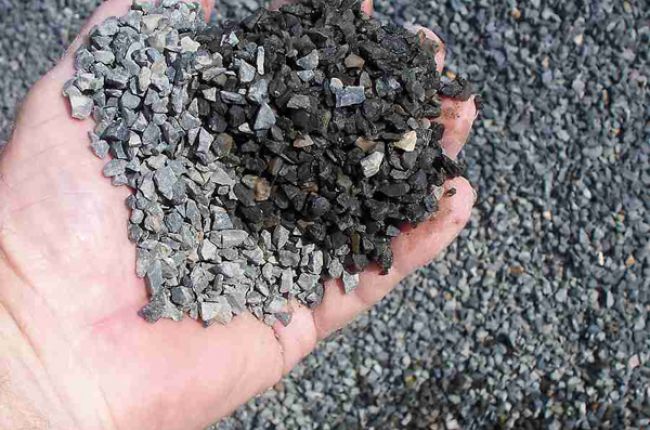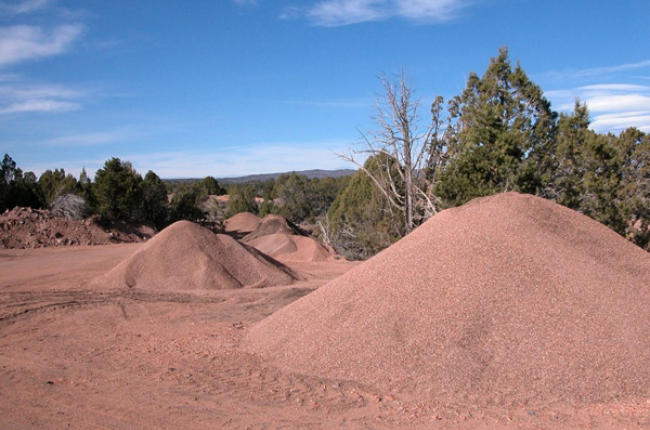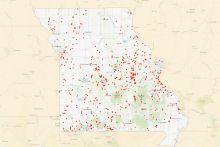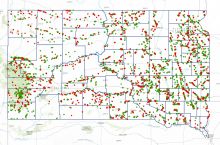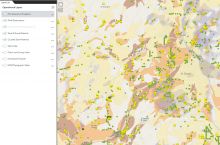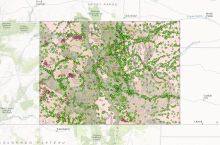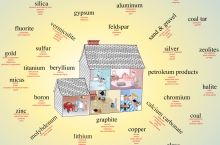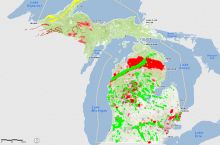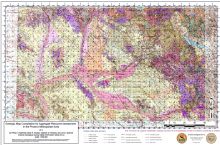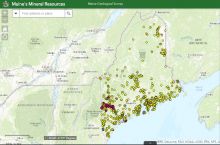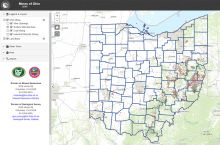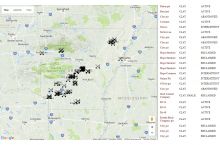Industrial minerals are non-metal and non-fuel mineral resources including, for example, crushed rock, gravel, clays, sand (silica), gypsum, bentonite, and barite. They are the fundamental ingredients of roads and buildings, and they are essential for many industrial, commercial, and personal products and activities.
Why do industrial minerals matter?
For each resident of our country, we use more than 18,000 lbs. of industrial minerals per year in the United States. Sand, stone, and gravel make up roughly 90% of that amount. The rest are clays, salts, and other non-metals.[1] Industrial minerals are essential to thousands of everyday products including medicines, paint, ceramics, construction materials (from roofing to windows to insulation), ink, and paper coatings.
How does geoscience help inform decisions about industrial minerals?
Geoscientists locate industrial mineral deposits, help determine how to mine them economically, help protect water and minimize environmental impacts around the mine, and help reclaim disturbed land after mining. Geoscientists also investigate the physical or chemical properties of industrial minerals to ensure their appropriate use.
References
1“How many pounds of minerals are needed for each person in the United States per year?,” U.S. Geological Survey FAQ
Learn More
Introductory Resources
- Aggregate and the Environment (Booklet), American Geosciences Institute
An overview of aggregate minerals, their importance, where they come from, how they are processed for our use, the environmental concerns related to their mining and processing, how those concerns are addressed, and the policies and regulations designed to safeguard workers, neighbors, and the environment from the negative impacts of aggregate mining.
Resources for Educators
- Education Resources Network, AGI's Center for Geoscience & Society
Search for industrial mineral resources in: Organizations, Curricula & Instruction, Teaching Media, Outreach Programs
- NGSS Performance Expectations, Next Generation Science Standards
K-ESS3-1, 4-ESS3-1, MS-ESS3-1, HS-ESS3-1, HS-ESS3-2
- NGSS Disciplinary Core Ideas, Next Generation Science Standards
ESS3.A

